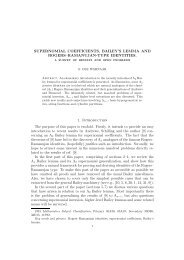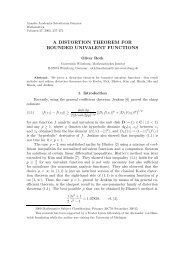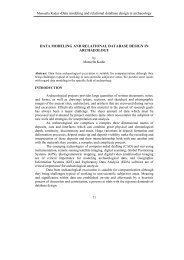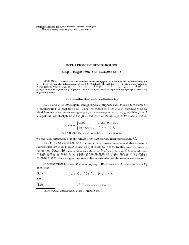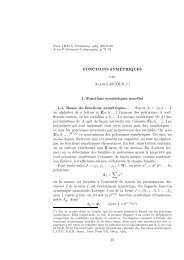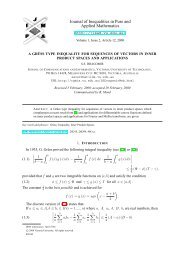CHAPTER 6 TWO-COLORED WALLPAPER PATTERNS 6.0 ...
CHAPTER 6 TWO-COLORED WALLPAPER PATTERNS 6.0 ...
CHAPTER 6 TWO-COLORED WALLPAPER PATTERNS 6.0 ...
Create successful ePaper yourself
Turn your PDF publications into a flip-book with our unique Google optimized e-Paper software.
p b<br />
′ 1g pg′ p b<br />
′ 1g<br />
Fig. 6.12<br />
6.2.5 Are there any more pg types? The three look-alikes in<br />
figures 6.4, 6.9, and 6.11 represent the three types (pg, p b<br />
′ 1g, pg′ ,<br />
respectively) discussed so far in this section: they all have glide<br />
reflection in a single direction, and what makes them distinct is the<br />
effect of their glide reflections on color. Could there be other such<br />
types? Well, in the absence of rotations and reflections, the only<br />
other isometry that could split the three types into subtypes is<br />
translation. At first it looks like we could have three × two = six<br />
cases: three possibilities for glide reflection (color-preserving<br />
only (PP) or both color-preserving and color-reversing (PR) or<br />
color-reversing only (RR)), and two possibilities for translation<br />
(color-preserving only (PP) or both color-preserving and colorreversing<br />
(PR), see section 6.1).<br />
But a pattern’s glide reflections and translations are not<br />
independent of each other: as we will prove in section 7.4, and as<br />
you can see in figure 6.13 right below, a glide reflection (mapping A<br />
to B) and a translation (mapping B to C) combined produce another<br />
glide reflection (mapping A to C) parallel to the first one (G × T =<br />
G); moreover (see figure 6.21 further below), the combination of<br />
two parallel glide reflections of opposite vectors is a<br />
translation perpendicular to their axes (G × G = T).



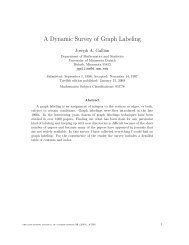


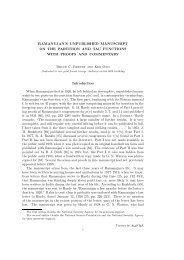
![(.,t ] and [s, .) , where [s,t ] = {s' GT; s ¤ s' ¤ t} , (.,t ] = {s' GT; s' ¤ t} and ...](https://img.yumpu.com/43303393/1/184x260/t-and-s-where-st-s-gt-s-a-s-a-t-t-s-gt-s-a-t-and-.jpg?quality=85)
